Mohamad H. Dinan
Member, IEEE
RIS-Assisted OTFS Communications: Phase Configuration via Received Energy Maximization
Apr 12, 2024



Abstract:In this paper, we explore the integration of two revolutionary technologies, reconfigurable intelligent surfaces (RISs) and orthogonal time frequency space (OTFS) modulation, to enhance high-speed wireless communications. We introduce a novel phase shift design algorithm for RIS-assisted OTFS, optimizing energy reception and channel gain in dynamic environments. The study evaluates the proposed approach in a downlink scenario, demonstrating significant performance improvements compared to benchmark schemes in the literature, particularly in terms of bit error rate (BER). Our results showcase the potential of RIS to enhance the system's performance. Specifically, our proposed phase shift design technique outperforms the benchmark solutions by over 4 dB. Furthermore, even greater gains can be obtained as the number of RIS elements increases.
RIS-Assisted Generalized Receive Quadrature Spatial Modulation
Nov 30, 2023

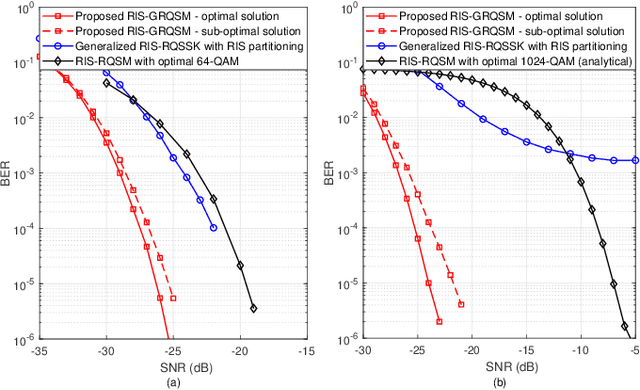
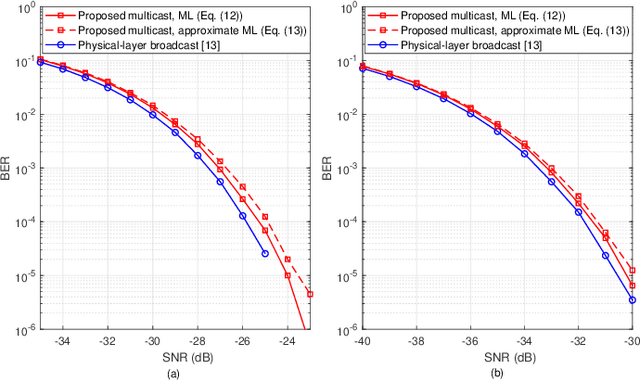
Abstract:In this paper, reconfigurable intelligent surface (RIS)-assisted generalized receive quadrature spatial modulation (RIS-GRQSM) is proposed to improve the spectral efficiency of RIS-aided quadrature spatial modulation (QSM) systems by utilizing the concept of generalized spatial modulation (GSM). That is, multiple antennas are activated at the receiver independently for both the real and imaginary parts. We propose a max-min optimization problem to adjust the phase shifts of all RIS elements to maximize the relevant signal-to-noise ratios (SNRs) at all activated receive antennas. Using Lagrange duality, the non-convex optimization problem involving the phase shifts of all RIS elements reduces to a convex optimization involving a number of variables equal to the number of activated receive antennas. A successive greedy detector (GD) can be used at the receiver to detect the active antennas, which simplifies the detection process. The numerical results show that the proposed scheme outperforms the benchmark schemes in terms of error rate performance, especially in systems with a larger number of receive antennas. In the special case where each receive antenna corresponds to a user and is activated, the RIS-GRQSM system becomes a multicast communication system. In this context, in contrast to existing phase shift optimization algorithms which exhibit an impractical level of complexity, our proposed solution offers the advantage of low complexity and practical feasibility of implementation.
RIS-Assisted Receive Quadrature Spatial Modulation with Low-Complexity Greedy Detection
Jan 02, 2023Abstract:In this paper, we propose a novel reconfigurable intelligent surface (RIS)-assisted wireless communication scheme which uses the concept of spatial modulation, namely RIS-assisted receive quadrature spatial modulation (RIS-RQSM). In the proposed RIS-RQSM system, the information bits are conveyed via both the indices of the two selected receive antennas and the conventional in-phase/quadrature (IQ) modulation. We propose a novel methodology to adjust the phase shifts of the RIS elements in order to maximize the signal-to-noise ratio (SNR) and at the same time to construct two separate PAM symbols at the selected receive antennas, as the in-phase and quadrature components of the desired IQ symbol. An energy-based greedy detector (GD) is implemented at the receiver to efficiently detect the received signal with minimal channel state information (CSI) via the use of an appropriately designed one-tap pre-equalizer. We also derive a closed-form upper bound on the average bit error probability (ABEP) of the proposed RIS-RQSM system. Then, we formulate an optimization problem to minimize the ABEP in order to improve the performance of the system, which allows the GD to act as a near-optimal receiver. Extensive numerical results are provided to demonstrate the error rate performance of the system and to compare with that of a prominent benchmark scheme. The results verify the remarkable superiority of the proposed RIS-RQSM system over the benchmark scheme.
RIS-Assisted Receive Quadrature Space-Shift Keying: A New Paradigm and Performance Analysis
Nov 23, 2021
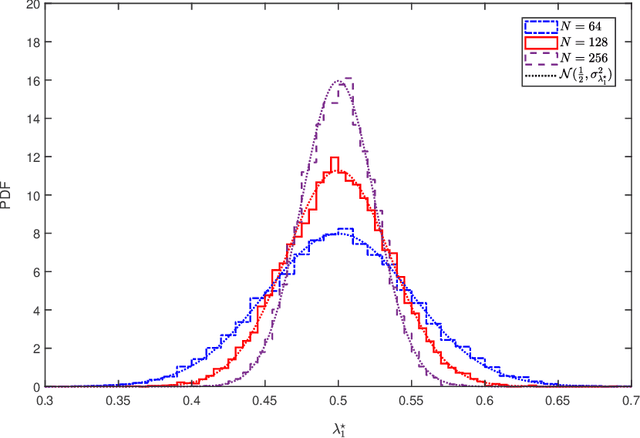
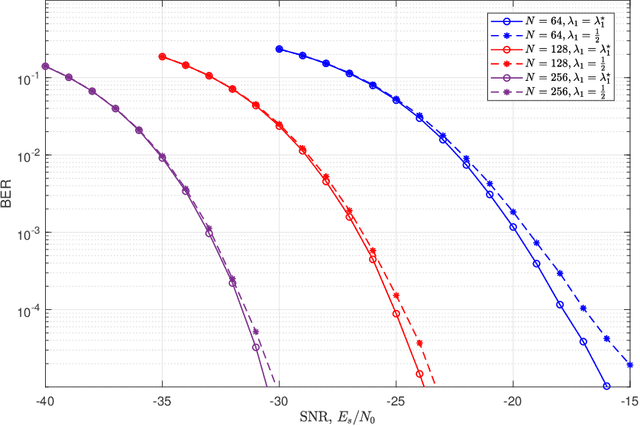
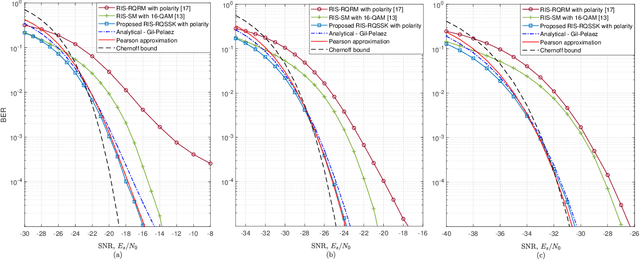
Abstract:Reconfigurable intelligent surfaces (RISs) represent a promising candidate for sixth-generation (6G) wireless networks, as the RIS technology provides a new solution to control the propagation channel in order to improve the efficiency of a wireless link through enhancing the received signal power. In this paper, we propose RIS-assisted receive quadrature space-shift keying (RIS-RQSSK), which enhances the spectral efficiency of an RIS-based index modulation (IM) system by using the real and imaginary dimensions independently for the purpose of IM. Therefore, the error rate performance of the system is improved as all RIS elements reflect the incident transmit signal toward both selected receive antennas. At the receiver, a low-complexity but effective greedy detector (GD) can be employed which determines the maximum energy per dimension at the receive antennas. A max-min optimization problem is defined to maximize the received signal-to-noise ratio (SNR) components at both selected receive antennas; an analytical solution is provided based on Lagrange duality. In particular, the multi-variable optimization problem is shown to reduce to the solution of a single-variable equation, which results in a very simple design procedure. In addition, we investigate the average bit error probability (ABEP) of the proposed RIS-RQSSK system and derive a closed-form approximate upper bound on the ABEP. We also provide extensive numerical simulations to validate our derivations. Numerical results show that the proposed RIS-RQSSK scheme substantially outperforms recent prominent benchmark schemes. This enhancement considerably increases with an increasing number of receive antennas.
Sparse Layered MIMO with Iterative Detection
May 21, 2021
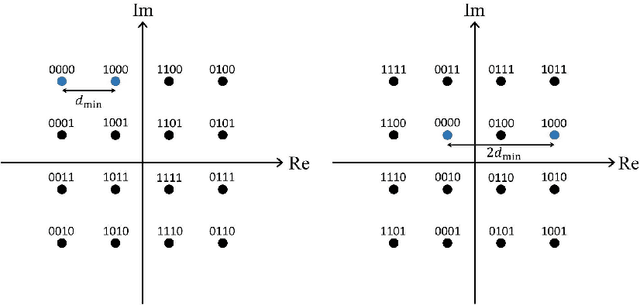
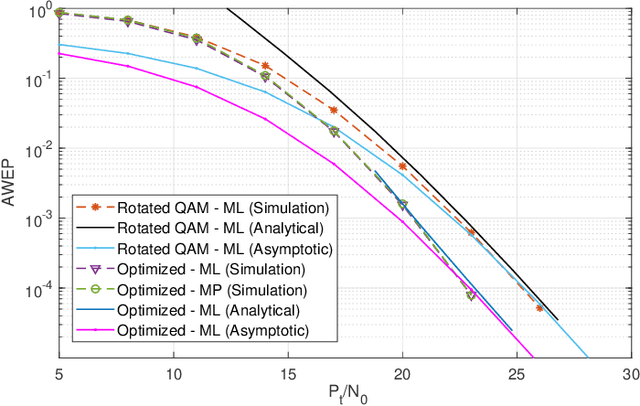
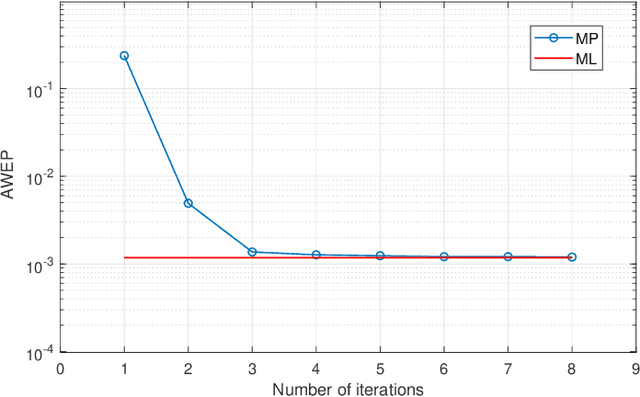
Abstract:In this paper, we propose a novel transmission scheme, called sparse layered MIMO (SL-MIMO), that combines non-orthogonal transmission and singular value decomposition (SVD) precoding. Nonorthogonality in SL-MIMO allows re-using of the eigen-channels which improves the spectral efficiency and error rate performance of the system through enhancing the coding gain and diversity gain. We also present a low-complexity message-passing (MP) detector for the proposed SL-MIMO system which performs quite close to maximum likelihood (ML). The joint moment generating function (MGF) of the ordered eigenvalues is calculated and used to derive a closed-form upper bound on the average word error probability (AWEP) of the SL-MIMO system, and this derived expression is then used to analyze the diversity gain of the system. We use our analytical results to design sub-optimal codebooks to minimize the error rate of the SL-MIMO system. Simulation results in 4x4 and 6x6 multiple-input multiple-output (MIMO) systems with 4-ary, 16-ary, and 64-ary constellations show that our proposed SL-MIMO scheme outperforms competing approaches such as X- and Y-codes in terms of system error rate performance. SL-MIMO has 5.6 dB advantage compared to X-codes and 4.7 dB advantage compared to Y-codes in 6x6 MIMO system with a 64-ary constellation.
 Add to Chrome
Add to Chrome Add to Firefox
Add to Firefox Add to Edge
Add to Edge